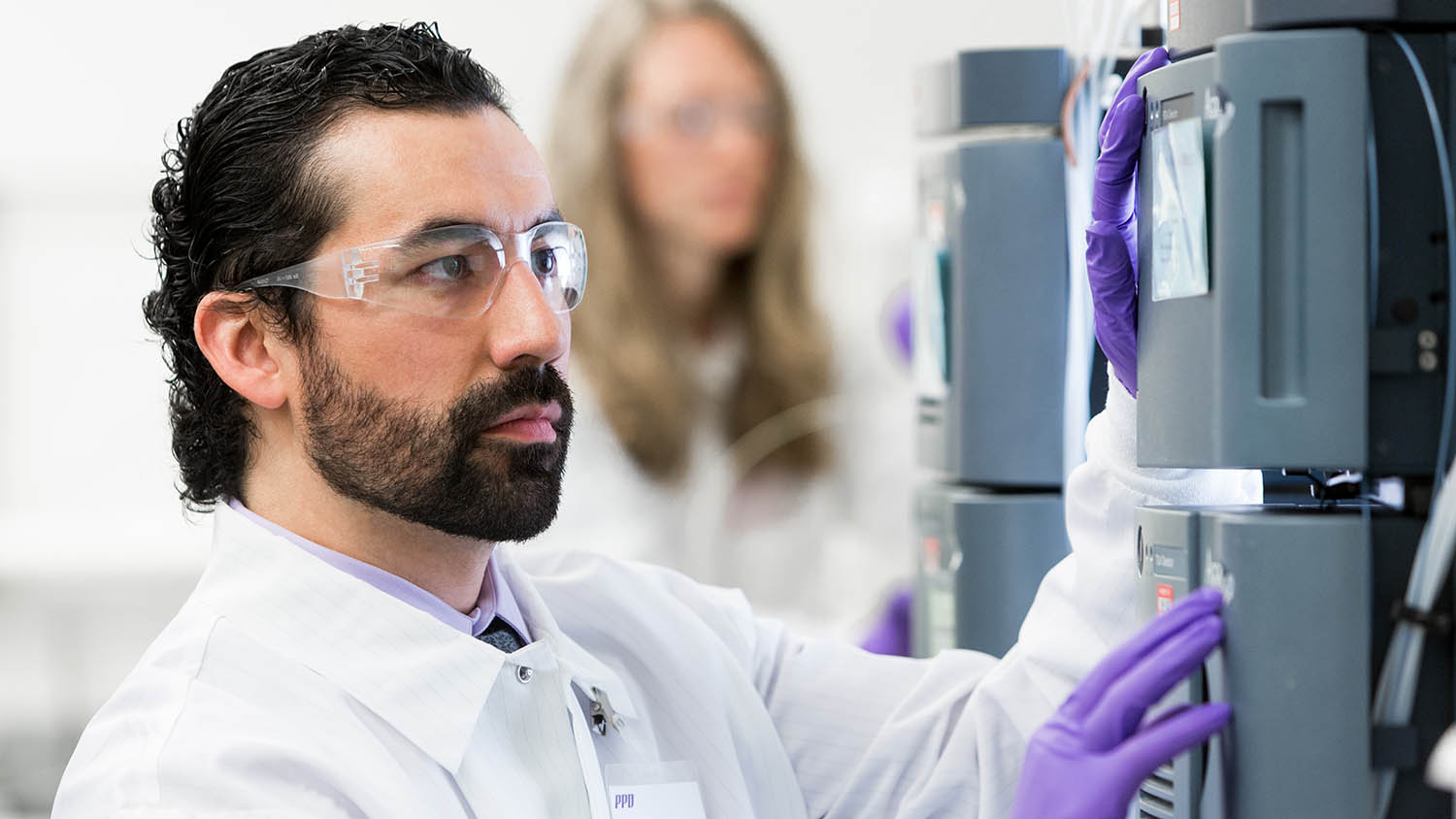
Predicting Extractables & Leachables Amounts Using Mathematical Modeling

In this post, Xiaochun Yu, senior principal scientist at the PPD GMP lab, discusses the ability to predict the amounts of extractables and leachables (E&L) from container stoppers based on mathematical models. Yu was able to showcase his work in the August 2020 issue of BioPharm International magazine. along with Benton Cartledge, associate research scientist, and several other scientists on his team.
Pharmaceutical products are often exposed to numerous polymeric or elastomeric materials from packaging or manufacturing components. These components have a propensity to introduce compounds, called leachables, that migrate from these materials into the drug products under normal conditions of use, potentially posing health risks to the patient directly. Since these compounds can influence drug product safety, efficacy and purity, regulatory authorities require that leachables are evaluated for any new drug application.
Laboratory testing for extractables, compounds that can be forced from polymeric or elastomeric components using appropriate conditions and extracting solvents, can therefore be applied to determine and predict potential leachables using either controlled extraction studies or simulation studies. The latter predicts a realistic leachables profile and amount, using mathematical models wherein appropriate temperature and duration of exposure are used, and are critical in assessing potential risk from leachables.
How can mathematical models be used to predict leachable amounts in the early stages of product development?
Traditionally, leachable testing involves performing analytical analyses at various intervals on a drug product that has been stored in the container/closure and packaging system inclusive of the final shelf-life duration. However, drug products usually have long shelf lives that can span years. For instance, if a product has a 24-month shelf life, it takes a period of 24 months to fully evaluate the leachable profile, making it difficult to evaluate leachables in a timely manner. An appropriately derived mathematical model can help address this problem.
The mathematical model functions by applying the data from two early time points of analytical testing, which are then applied to calculate leachable amounts that would be observed at future time points. The team’s empirical mathematical model for leachables amount versus time follows a logarithmic correlation:
Amount of Leachables = a x Ln(t) + b
where a and b are constants and t is the time
This model is important because it can aid in the assessment of safety risks and give an accurate prediction of future amounts of leachables, thus eliminating lengthy waiting periods. Accuracy can be checked by comparing predicted leachables to true amounts over time.
How do changes in temperature for drug product storage conditions affect leachables?
An increase in storage temperature typically leads to an increase in leachables amounts present in a drug product (e.g., changing a drug product from refrigerated storage to room temperature/ambient storage during drug product development). Therefore, an equation that leverages the correlation of leachables amounts in products and temperature can help to predict final amounts. The team also derived such an equation, aiding in the assessment of patient safety and risk.
How can we use simulation study to predict a potential leachables profile in the drug product?
Besides selecting the right simulant solvent, the selection of temperature and duration is critical for a successful simulation study.
The team has established an empirical correlation between the temperature and duration, and that correlation can be used to facilitate the selection of the correct temperature and duration for a simulation study to make the simulation study data a more reliable representation of leachables amounts at the end of the drug product shelf life.
How useful and how accurate are these mathematical models for predicting leachables?
Mathematical models are very useful in predicting the amount of and potential safety risks from leachables. These models also help to design an appropriate extractables study.
The accuracy of these mathematical models depends on their applicability to a specific drug product.
While some models are established based on the data from a specific system, further evaluation is needed for other systems.
Published work and data in this area is limited, so more is required in order to establish useful and accurate mathematical models that are applicable to various drug products in a variety of container and closure systems. The work done by Yu and his team is an important step in this process. You can read the full version that details the team’s work with simulation studies here.